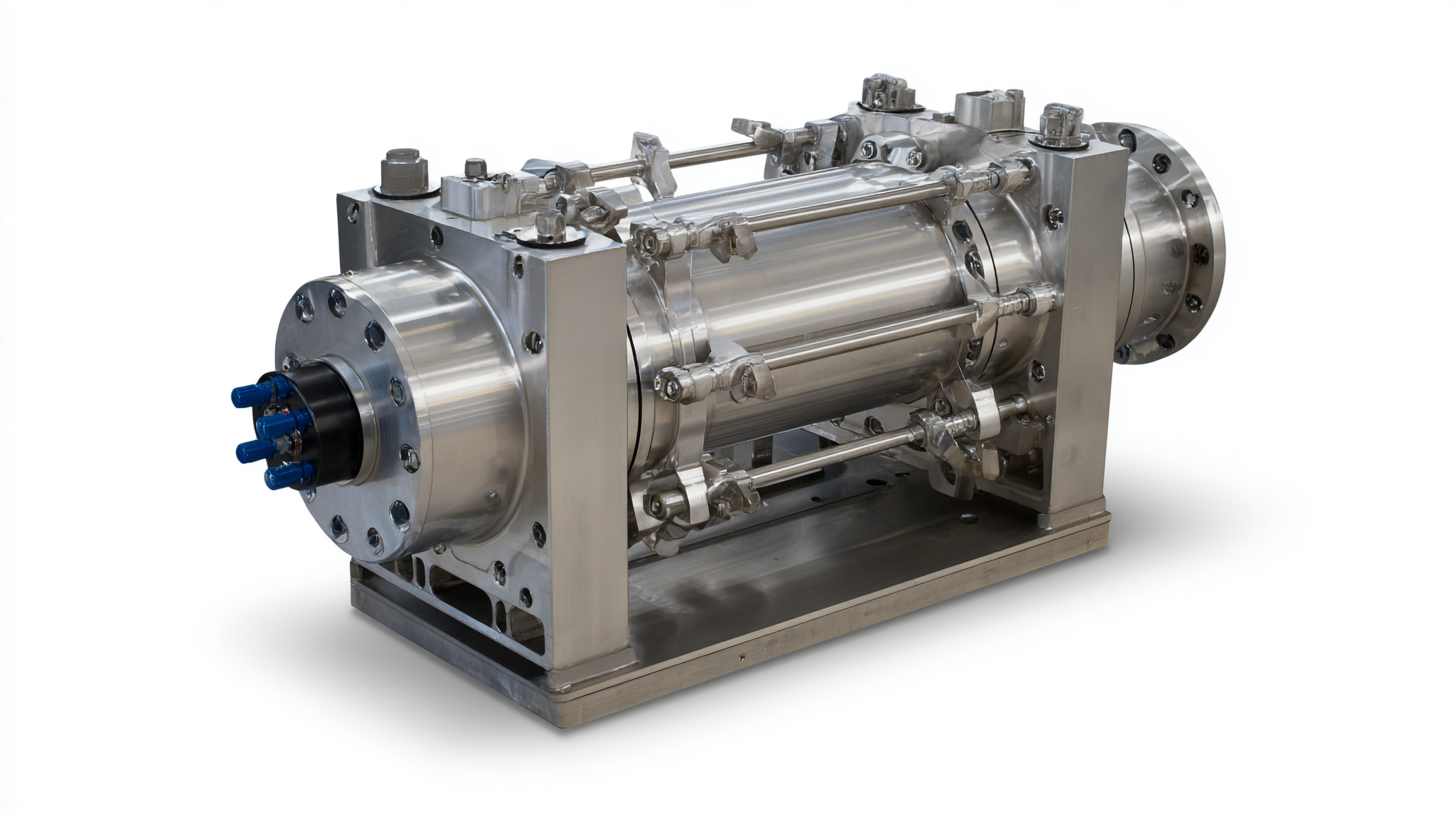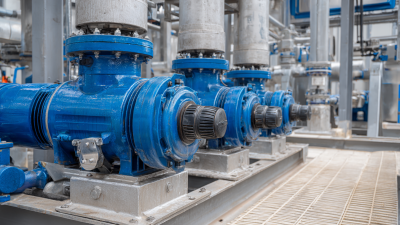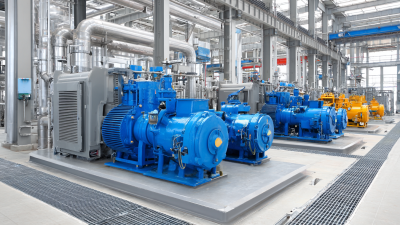
Universal Pumping | High Pressure Pumps
High Pressure Pumps for Difficult to Pump Slurry, Sludge, and Food Waste.
In today's rapidly evolving industrial landscape, the significance of high pressure transfer pumps is becoming increasingly apparent. According to a report by Research and Markets, the global market for industrial pumps, including high pressure transfer pumps, is projected to reach $80 billion by 2025, driven by the rising demand for efficient fluid management across various sectors such as oil and gas, chemicals, and water treatment. High pressure transfer pumps are engineered to handle the rigorous demands of high-pressure applications, ensuring the safe and efficient movement of liquids under extreme conditions. With advancements in pump technology and materials, industries can now operate with enhanced performance, minimized downtime, and reduced operational costs. As we delve deeper into the functionality of high pressure transfer pumps, it becomes clear that they play a pivotal role in optimizing industrial processes and improving overall productivity.

High pressure transfer pumps are crucial in various industrial applications, primarily due to their ability to efficiently move fluids at elevated pressures. These pumps are designed to handle a range of challenging environments, including chemical processing, oil and gas, and water treatment. According to a report by Grand View Research, the global high pressure pump market is projected to reach $3.8 billion by 2025, highlighting the increasing demand for robust and reliable pumping solutions in industrial settings.
One of the key characteristics of high pressure transfer pumps is their construction, which typically includes durable materials such as stainless steel or high-grade plastic to withstand corrosive substances. Moreover, many models are equipped with advanced sealing technologies to prevent leaks and ensure operational efficiency. A study published by Research and Markets indicated that the efficiency of these pumps can significantly reduce operational costs, with energy savings of up to 30% compared to traditional pumping systems. This efficiency, combined with reliability, makes high pressure transfer pumps a preferred choice for industries looking to optimize their fluid handling processes.
High pressure transfer pumps play a crucial role across various industrial sectors, providing efficient and reliable solutions for the movement of fluids under elevated pressures. These pumps are essential in applications such as oil and gas extraction, water treatment, and chemical processing, where they facilitate the transfer of liquids that can be hazardous or require stringent control for safety and efficiency. Their ability to handle high pressures makes them irreplaceable in environments where traditional pumps may fail, thereby ensuring consistent operations and reducing downtime.
The global market for high pressure transfer pumps is projected to grow steadily, with significant demand coming from industries that rely on these pumps for their operational needs. By 2033, the market is expected to reach approximately $1.2172 billion, reflecting a compound annual growth rate of 3.4% from $1.5904 billion in 2025. This growth is driven by the increasing need for efficient fluid transfer solutions in sectors such as oil and gas, where the demand for robust pumping systems is rising to meet production challenges. As industries continue to innovate and expand, high pressure transfer pumps will remain a fundamental component in their infrastructure.
This chart illustrates the distribution of key applications of high pressure transfer pumps across various industries. The oil and gas industry represents the largest application area, followed by water treatment and chemical processing, highlighting the critical role these pumps play in industrial processes.
High-pressure transfer pumps play a pivotal role in various industrial applications, offering numerous benefits that enhance production processes. Their ability to handle high flow rates and maintain stable pressure makes them essential in sectors such as chemical processing, oil and gas, and water treatment. According to a recent report, the global market for high-pressure pumps is expected to grow significantly, reaching USD 5.6 billion by 2026, driven by increased demand for efficient fluid transfer solutions in industrial operations.

One of the primary benefits of utilizing high-pressure transfer pumps is their efficiency in handling challenging materials, including viscous fluids and slurries. This capability not only streamlines operations but also reduces downtime and maintenance costs. The advancements in pump design, such as the integration of innovative technologies like soft fiber pumps, enable the production of lightweight and adaptable systems, which are increasingly sought after in engineering applications. Furthermore, these pumps contribute to sustainable practices by minimizing energy consumption and reducing greenhouse gas emissions, aligning with global efforts to adopt greener technologies.
In addition, the deployment of high-pressure transfer pumps supports the evolving landscape of renewable energy applications, particularly in processes that require effective fluid management. The ability of these pumps to operate under varying conditions makes them ideal for adapting to the integration of renewable energy sources. This adaptability is crucial as industries aim to adopt cleaner, more sustainable production methods while maintaining operational efficiency and reliability.
High pressure transfer pumps are crucial components in various industrial applications, necessitating regular maintenance to ensure their longevity and efficiency. Proper upkeep not only enhances performance but also minimizes downtime and repair costs. One of the key maintenance practices is to perform routine inspections. This includes checking for leaks, monitoring pressure levels, and cleaning the pump components to prevent the buildup of debris and contaminants.
Another important aspect is ensuring that the lubrication system is functioning optimally. Insufficient lubrication can lead to increased wear and tear on pump parts. Regularly inspecting and replenishing lubricant levels can significantly extend the lifespan of the pump. Additionally, using high-quality lubricants designed specifically for high-pressure applications can enhance performance.
Lastly, operator training is essential. Ensuring that personnel are well-informed about the proper operation of high pressure transfer pumps can prevent misuse that may lead to premature failure. Regular training sessions can help identify potential issues early on and foster a culture of maintenance awareness within the team. By adhering to these maintenance practices, industrial facilities can enjoy improved reliability and operational excellence from their high pressure transfer pumps.
| Dimension | Value |
|---|---|
| Max Pressure (psi) | 1500 |
| Flow Rate (GPM) | 300 |
| Drive Type | Electric Motor |
| Common Applications | Water Treatment, Chemical Processing |
| Maintenance Frequency (months) | 6 |
| Common Maintenance Practices | Lubrication, Seal Inspection, Vibration Analysis |
| Expected Lifespan (years) | 10-15 |
High pressure transfer pumps are essential in various industrial applications, particularly in the oil and gas, chemical processing, and wastewater management sectors. However, the use of these pumps presents several challenges. According to a recent report by Grand View Research, the global market for industrial pumps is expected to reach $85 billion by 2027, indicating a significant reliance on high pressure systems. One primary challenge is the wear and tear associated with high-pressure operations, which can lead to increased maintenance costs. In fact, it has been noted that unplanned downtime can cost industries up to $600,000 per hour, emphasizing the need for reliable solutions.

To overcome these challenges, innovations in materials and design have been critical. For instance, advancements in ceramic and composite materials have enhanced pump durability and efficiency, allowing them to withstand harsh operating conditions. Additionally, implementing predictive maintenance technologies has been shown to reduce maintenance costs by as much as 25% and downtime by 30%, according to data from McKinsey & Company. These solutions not only improve the functional longevity of high pressure transfer pumps but also contribute to overall operational efficiency and cost savings in industrial settings.






Universal Pumping
625 Apache Trail
Woodstock, GA 30189
Mon - Fri | 9:00 AM - 5:00 PM
Universal Pumping is staffed with industry professionals with 20-45 years experience with high pressure pumping systems. We represent only the “elite producers” in pump manufacturing: Britain’s EMS and Germany’s EMMERICH. Our engineering and manufacturing approach is conservative, and we do not use “guess work” in the design or sales of our pumping and filtration equipment.



